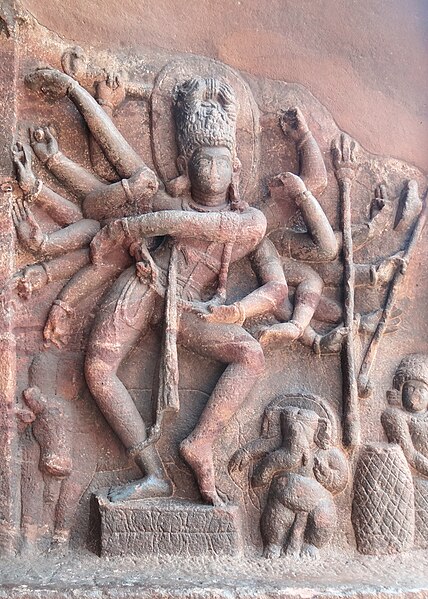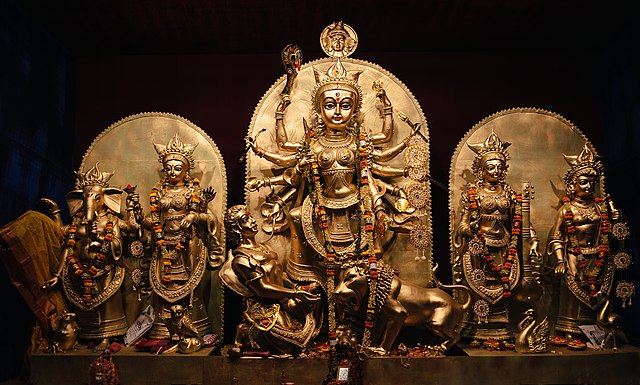Nataraja, also known as Adalvallan, is a depiction of Shiva, one of the main deities in Hinduism, as the divine cosmic dancer. His dance is called the tandava. The pose and artwork are described in many Hindu texts such as the Tevaram and Thiruvasagam in Tamil and the Amshumadagama and Uttarakamika agama in Sanskrit and the Grantha texts. The dance murti featured in all major Hindu temples of Shaivism, and is a well-known sculptural symbol in India and popularly used as a symbol of Indian culture, as one of the finest illustrations of Hindu art. This form is also referred to as Kuththan, Sabesan, and Ambalavanan in various Tamil texts.
A 10th-century Chola dynasty bronze sculpture of Shiva, the Lord of the Dance at the Los Angeles County Museum of Art
Chola bronze, Tamil Nadu, 10th or 11th century.
Detail of Chola bronze
6th/7th century Nataraja in Cave 1 of Badami cave temples
Hindu deities are the gods and goddesses in Hinduism. Deities in Hinduism are as diverse as its traditions, and a Hindu can choose to be polytheistic, pantheistic, monotheistic, monistic, even agnostic, atheistic, or humanist. The terms and epithets for deities within the diverse traditions of Hinduism vary, and include Deva, Devi, Ishvara, Ishvari, Bhagavān and Bhagavati.
Goddess Durga and a pantheon of other gods and goddesses being worshipped during Durga Puja Festival in Kolkata.
Six Hinduism deities. Surya, Parvati, Hanuman, Lakshmi, Vishnu, and Indra. All of these statues came from India, except Vishnu (from the Thai-Cambodian border). Various eras. National Museum of Scotland, Edinburgh
Shiva (left), Vishnu (middle), and Brahma (right)
The ten avatars of Vishnu, (Clockwise, from top left) Matsya, Kurma, Varaha, Vamana, Krishna, Kalki, Buddha, Parshurama, Rama and Narasimha, (in centre) Radha and Krishna. Painting currently in Victoria and Albert Museum.







